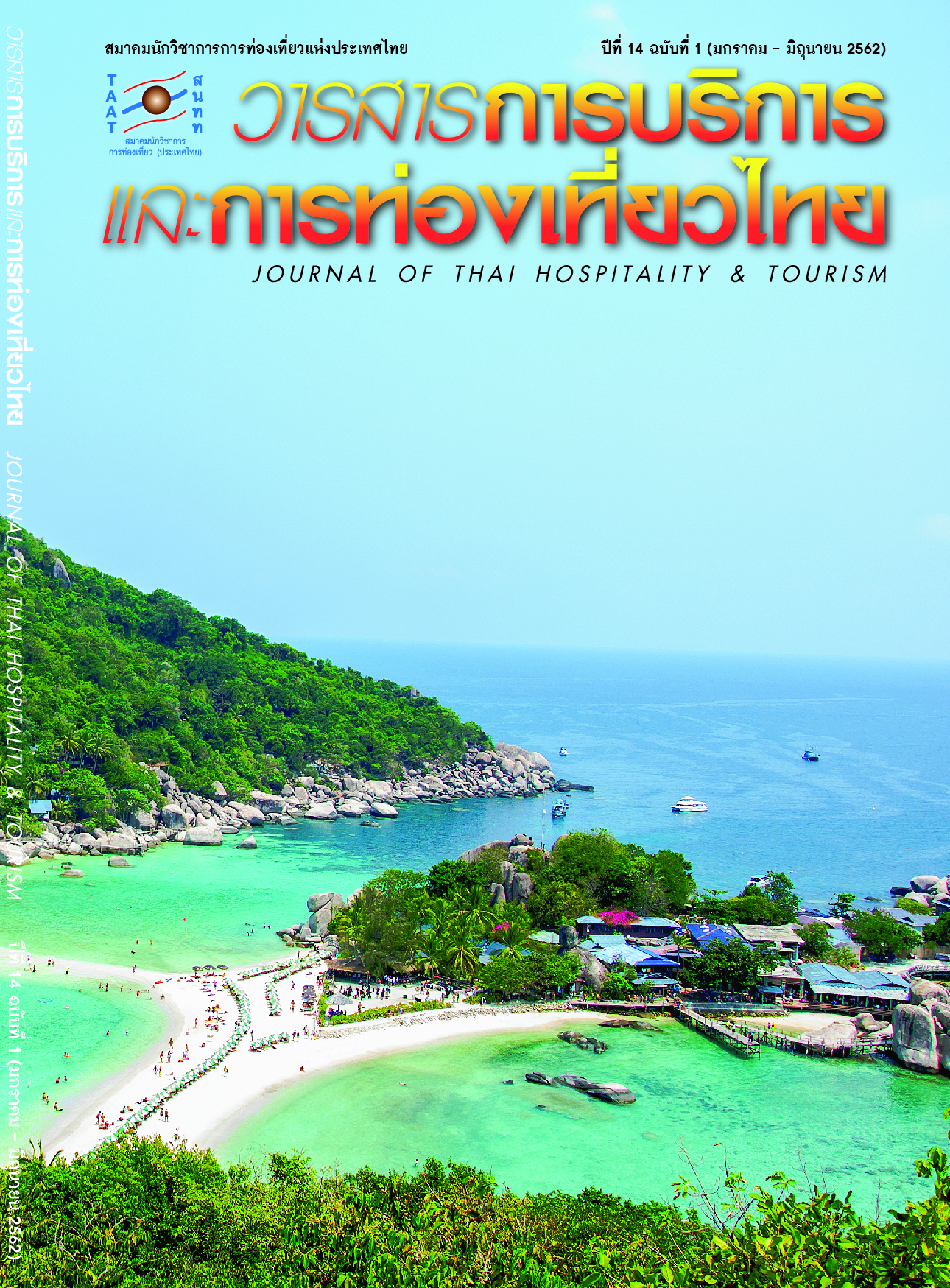Decision Making Factors of Thai Tourists Travelling in Tak Special Economic Development Zone
Main Article Content
Abstract
Research on decision making factors of Thai tourists travelling in Tak special economic development zone. The purpose of this study was to study the demographic characteristics and factors affecting the decision of Thai tourists traveling in Tak special economic zone. To provide an appropriate way to manage appropriate tourism in Tak Special Economic Zones. This study was carried out on a sample of 400 Thai tourists traveling in the Tak Special Economic Zone using the open-ended and open-ended questionnaires. Use descriptive statistics for frequency, percentage, mean, and standard deviation. The research found that most of the tourists were male. Age between 30-39 years old. Personal Business and income between 20,001 - 30,000 Baht per month. Decision making factors to travel in Tak special economic zone. Sorting rankings from descending order is the physical appearance, product price, promotion, marketing process, personnel and distribution channels. The appropriate way to manage tourism in the Special Economic Zone should be to develop all the factors simultaneously.
Article Details
References
[2] Chainok, Prapatchai. (2010). Guidelines for The Development of Cultural Tourism: A Case Study of Ban Dansai, Dansai District, Loei Province. Master of Arts Thesis. Loei Rajabhat University.
[3] Chanhthavong, Sonexay. (2011). A Study of Savannakhet Province Tourism Development Guidelines to Become A Tourism Bordertown. Retrieved January, 24, 2017, from: https://tcd.thailis.or.th.
[4] Chuakrut, Surawanee. (2011). Behavior of Thai Tourists towards Internet Reservation for Accommodations in Chiang Mai Province. Master of Business Administration Thesis. Chiang Mai University.
[5] Jirawongwan, Chaturong. (2006). Guidelines of Public Relations for Accommodation Ban Apae in Tambon Doi Hang, Muang District Chiangrai Province. Master of Business Administration Thesis. Chiang Rai Rajabhat University.
[6] Keawsuriya, Rumpaipun. (2004). Principles of Sustainable Tourism Management. Retrieved January 24, 2017, from https://lib.dtc.ac.th article/tourism/0007.pdf.
[7] Khonkumkard, Rossukon. (2013). Strategic Management for Hospitality Business of Frontier Tourism at Nakhon Phanom Province under ASEAN Economic Community (AEC) Context for Sustainable Tourism Development. Master of Business Administration Thesis. Khon Kaen University.
[8] Kongpet, Udomporn. (2005). Development of Eco-Tourism: A Case Study of Phu Foilom, Nongsang Distric, Udon Thani Province. Master of Business Administration Thesis. Mahasarakham University.
[9] Likert, R. (1967). The Human Organization; Its Management and Value. New York: Mc Graw-Hill.
[10] Petchko, Kanokrat. (2012). Strategic Management of Creative Socio-Economic Development for Promoting the Identity of Frontier Tourism at Chiang Saen District, Chiang Rai Province. Master Master of Business Administration Thesis. Khon Kaen University.
[11] Rattanaphanop, Kamonrat. (2007). Strategic Plan for Sustainable Tourism Development in Prachinburi. Master of Arts Thesis. Naresuan University.
[12] Serirat, Siriwan. et al. (2012). Marketing Plan for Promoting Thai Kitchen Equity into ASEAN Markets: A Case Study of Thailand, Lao People’s Democratic Republic and Kingdom of Cambodia. Suan Dusit Rajabhat University.
[13] Sirithiti, Kanok-on. (2006). The Domestic Travel of Lampang People Living in the Municipal Area. Master of Arts Thesis. Chiang Mai University.
[14] Sriwilai, Nantapohn. et al. (2013). Factors Affecting Tourists's Decision to visit Nakhon Phanom Province. MBA-KKU Journal, 6(2), 92-106.
[15] Tak Special Economic Development Zone. (n.d.). Background: Tak Special Economic Development Zone. Retrieved January, 24, 2016, from: https://www.taksez.com/th/page/establishment.html.
[16] Thangchan, Wittika. (2007). Integrated Tourism Marketing Stratergies for Ubon Ratchatani Province. Master of Arts Thesis. Naresuan University.
[17] Tourism Authority of Thailand. (n.d.). About Tak. Retrieved January, 24, 2016, from: https://www.tourismthailand.org/About-Thailand/Destination/Tak.
[18] Vitheesawat, Amornrat. (2007). Study of Physical Environmental Changed for Zoning Depend on Limit of Carrying Capacity to Support Tourism in Koh Changewat Trad.Master of Science Thesis in Geography. Srinakharinwirot University.
[19] Weaver, D. B. (1998). Ecotourism in the Less Developed World. New York: Oxon.
[20] World Tourism Organization. (2014). E-marketing for Tourism Destinations. Retrieved January 27, 2016, from https://www2.unwto.org/publication/handbook-e-marketing-tourism-destinations-fully-revised-and-extended-version-30.
[21] Yamane, T. (1967). Statistics an Introductory Analysis. 2nd ed. New York: Harper & Row.


